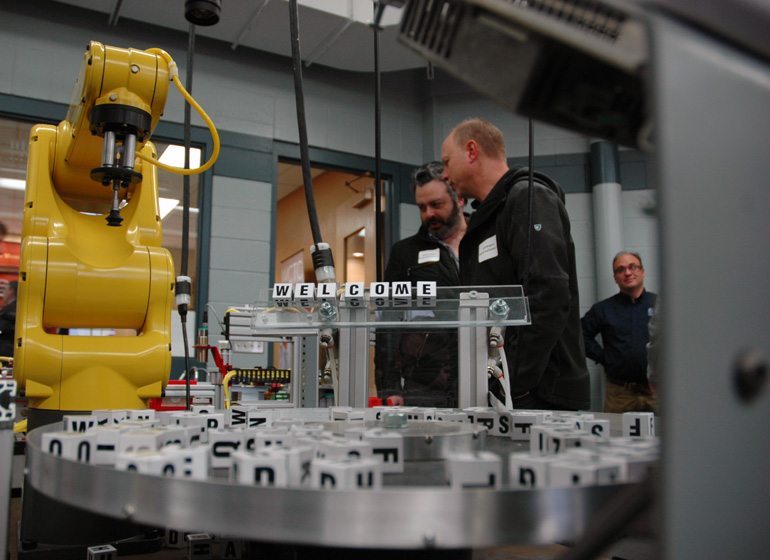The use of robotics has steadily grown in manufacturing, but a survey released last week by Schenck SC suggests many Wisconsin companies have not adopted the technology.

Seventy percent of the firms surveyed in the Appleton-based accounting and consulting firm’s 2016 manufacturing survey are not currently using robotics. That figure is expected to drop to 53 percent in the near future as 17 percent of respondents said they plan to begin utilizing robots in the next 12 to 36 months.
The survey included responses from 84 manufacturers, with a majority having between $5 million and $50 million in annual revenue. Most of the respondents were in metal or machinery manufacturing with the next largest sectors being plastics and paper and printing.
The respondents who were not using robots said either the costs exceeds the potential benefits or they haven’t identified the appropriate applications to use them in.
Among those using robots, 54 percent used them for machining, 25 percent for assembly and 25 percent for robotic welding.
The top reasons for using robotics included increased productivity, cited by 83 percent; reduced production costs, 79 percent; better use of labor, 75 percent; and ability to stay competitive, 75 percent.
The report’s authors noted that robotics creates new job opportunities for workers who can program, install, run and maintain robots. They also noted that respondents said robots allowed for increased output with the same number of workers while also ensuring higher quality and better on time delivery. Robots also allow companies to replace retiring or hard-to-find workers, the respondents said.
The survey also touched on 3D printing or additive manufacturing. Just one-sixth of the respondents said they are currently using 3D printing and another one-sixth plan to do so in the next three years.
Among those not using 3D printing, 90 percent said they hadn’t identified the appropriate applications to use the technology in and 10 percent said the cost outweighed the potential benefits.